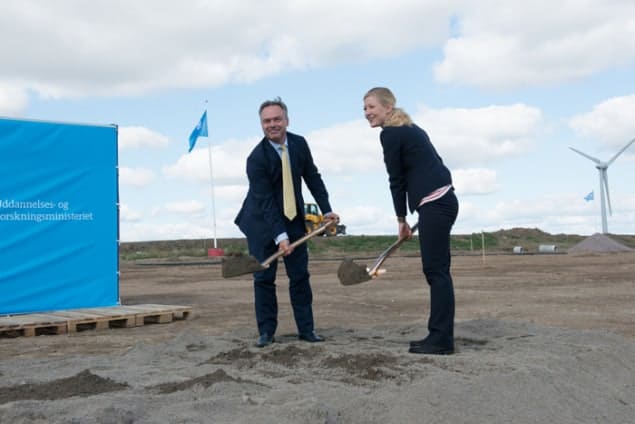
Construction has finally begun on the long-awaited €1.84bn European Spallation Source (ESS), which will take five years to build and will be the most advanced neutron source in the world. Initially envisioned almost two decades ago, the ESS buildings will be complete by 2019, with experiments set to begin four years later. “We are thrilled to be able to move ahead,” says Jim Yeck, ESS director-general. “Many people have been working hard for several years already to get to this point.”
The facility will include a 600 m underground linear proton accelerator, which will create a beam of protons with energy of 2 GeV and power of 5 MW. These protons will then be sent to a heavy-metal target station to produce neutrons, which will in turn travel to 22 instruments where researchers will use them to investigate a range of materials from superconductors to proteins. The ESS will also feature sample-preparation labs as well as a supercomputing centre and a software development centre.
The European Spallation Source is a must for European researchers
Dimitri Argyriou, ESS science director
“This is a very important project for material scientists in Europe, especially for those using neutrons to study matter,” says ESS science director Dimitri Argyriou. With existing European facilities aging and competition in the field growing in Asia and North America, Argyriou adds that “the ESS is a must for European researchers”.
Some 13 nations have committed about 97% of the total construction costs, with Sweden paying 35%, Denmark 12.5%, Germany 11%, the UK 10% and France 8%. Talks are currently ongoing with the Netherlands, Latvia and Lithuania to cover the remaining 2.5%. Yeck says that other factors were important in ensuring construction can begin, including securing approvals from the Swedish Environmental Court and the Swedish Radiation Safety Authority (SSM), which came during the summer. The SSM approval is, however, conditional, meaning that additional permits will be necessary as construction progresses.
Multinational effort
Yeck adds that all partner countries will be involved in the construction of the ESS, with a large part of the accelerator being built in France and Italy, while Germany, Spain and the UK will contribute to the target station. Meanwhile, Czech, Hungarian and Swiss partners will contribute instruments, and universities and institutes in Sweden and Denmark will make “significant contributions”.
The ESS has also announced that Roland Garoby, who has spent more than 35 years at the CERN particle-physics lab, will become its technical director this month. Garoby recently led the upgrade of CERN’s injector complex for the Large Hadron Collider and is also chair of the ESS’s technical advisory committee. “The opportunity to play a leading role in the ESS project is incredibly attractive,” he says, adding that the next five years will be “a multi-facetted challenge”.
A foundation-laying ceremony for the ESS is set for 9 October, with more than 600 people from the European scientific community expected to attend.



